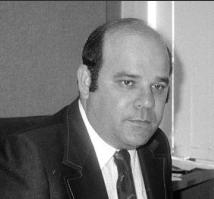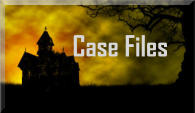“ONCE I STARTED, I JUST COULDN’T STOP. IT WENT SO FAST”
In short order it became clear to detectives there was something problematic with the story Butch had told them.
With the discovery of the ammunition and rifle box in his room that matched the caliber used in the murders, attention
turned away from the aging mob hit man and was refocused on the man who was now in custody under their
protection. On Thursday November 14th at 8:45 am, Butch DeFeo was shaken awake by detective George Harrison.
The first words out of Butch’s mouth were, “Did you find Falini yet?” The easy answer was “no”, but by now there was
little reason to pursue him. Instead, the first order of business that morning was to read Ronald “Butch” DeFeo his
rights.
Butch, now fully awake and understanding the gravity of what
was happening, began to protest his innocence vigorously, saying
he had been nothing but cooperative in trying to help them catch
the real killer. “You don’t have to do that…get Falini. He’s the guy
you want. Not me,” he pleaded. Desperate to display his sincerity
and innocence, he waived his right to an attorney in a bold
attempt to demonstrate to the detectives he was being truthful
with them. Unbeknown to Butch, Falini, (nee Mazzeo) had a solid
alibi, in that he was out of town at the time of the shootings. It
also didn’t fit the Mafia code to kill someone in their own home let
alone their entire family.
It was time to reboot the investigation, but this time Butch did
not find the detectives so much a captive audience as they were
harsh critics. Det. Gozaloff and Napolitano needed a much deserved break from questioning DeFeo as they had been on
this case around the clock and were mentally and physically exhausted. They were relieved by Detective Dennis
Rafferty and Lieutenant Robert Dunn. They were rested, ready and resolute with their interrogation and kept chipping
away at all the discrepancies in DeFeo’s story. DeFeo was asked again to recount his movements over the past two
days to determine if his recounting remained consistent with his original statement. Presented with a new direction to
go in, they recalculated their approach and surmised that since Butch had claimed to be awake at 4 am and heard his
brother go to the bathroom and flush the toilet then Marc obviously was alive at that point in time. As all were still
dressed in pajamas or night clothes, it was reasonable to believe the murders were likely to have been committed at
some point during the night or early morning hours and not in the daytime hours after Butch had left the house. After
all, the kids had school to get ready for and Marc had his doctor’s appointment that day. No one was sleeping late and
there were no signs of forced entry after DeFeo left. By his own admission he had locked the front door and left his
keys inside, preventing him from reentering.
Applying basic logic and a systematic examination of the timeline of activity in the house, Rafferty then was able to
narrow down the time of death to between the hours of 2am and 4am. And of course there was the issue of the caliber
of ammunition used in the slayings that matched that which DeFeo kept in his bedroom. It also begged the question
why the box the rifle was shipped in was now empty and where the weapon was right now. “Butch, it’s incredible,”
Rafferty said. “It’s almost unbelievable. You know we have a .35 caliber gun box from your room. Every one of the
victims has been shot with a .35 caliber. And you’ve seen the whole thing. There has to be more to it. It’s your gun that
was used, so where’s the fuckin’ gun!” DeFeo, by now feeling his story beginning to crumble, admitted that yes, he was
probably in the house at the time of the killings but had heard nothing and only saw the bodies of his parents when he
entered their room. Pressed further on this shaky premise, he fabricated an even more incredible story where Falini
had awakened him at 3:30 am by placing a revolver to his head. He and an accomplice (who DeFeo could not offer a
description of) then marched Butch through each room, shooting each family member in sequence with his own rifle
while Butch was forced to watch. The detectives switched gears at that point, allowing Butch to keep talking while
feigning some level of belief that Falini might have actually accomplished this.
The death knell of Butch’s story came swiftly after that. When the detectives wondered aloud about the lack of
residual evidence like spent cartridges, Butch volunteered that he removed the used cartridges from the crime scene.
“Wait a minute,” said Rafferty. “Why did you pick up the cartridges if you had nothing to do with it? You didn’t know it
was your gun that was used.” There was no response from Butch, but they needed to keep him talking. It was now
time for a Hail Mary, and Butch answered their prayers.
“They must have made you a piece of it,” Dunn told Butch. “They must have made you shoot at least one of them -- or
some of them.” It was time to close the trap.
“It didn’t happen that way, did it?” asked Rafferty.
“Give me a minute,” Butch replied, his head in his hands.
“Butch, they were never there, were they? Falini and the other guy were never there.”
“No,” Butch finally confessed. “It all started so fast. Once I started, I just couldn’t stop. It went so fast.”
While the drama played out at the house and the police station, word had quickly spread to the residents of the
sleepy, affluent town of Amityville that a horrific crime had been perpetrated in their otherwise quiet little village. Bear
in mind that only around 16 hours had passed between the discovery of the bodies and Butch DeFeo’s confession to the
crimes. It was in this time frame that total disbelief, uncertainty and no small amount of fear prevailed as uninformed
residents wondered if there was a cold-blooded killer at large, perhaps still walking among them. All the speculation
about the DeFeo’s possible mob ties went from whispers to full-throated declarations. Others speculated that a serial
killer was on the loose so normally unlocked doors now remained bolted shut and every unfamiliar face was met with
either a mistrustful stare or a complete aversion to eye contact.
By the following day the national media had descended on Amityville to cover this extraordinary story. It became
akin to a circus where police, in an attempt to alleviate traffic congestion, blocked roads and required proof of
residence from drivers before allowing them to proceed. Some just simply eschewed driving and walked to wherever
they wanted or needed to be. Police now had to divert their focus from trying to
solve a murder to crowd and traffic control and accommodating an increasingly
voracious media clamoring for information.
Joel Martin was a well-regarded DJ and talk-show host at WBAB on Long
Island, but he came into national prominence as the first radio reporter on the
scene at the DeFeo residence. At the time he
was reporting for UPI and through
information he gathered that night, was able
to establish and report the approximate time
of the murders. Martin was on the scene as the bodies were being removed and
remembers vividly one falling off a stretcher. “A picture like that you keep in your
head. Always”, Martin says.
For most people in the region, Martin was their real-time link to the goings-on at
the house the night the bodies were discovered, giving minute-by-minute
descriptions and updates remotely from the property. There were some curious residents on the scene as well,
cordoned off on the perimeter while authorities went about their grim business. On that night, as well as the following
morning, Martin took an informal consensus amongst townspeople as to who might have committed the crime and the
results were eye-opening. He found a significant number of them were fairly certain they knew the answer before an
arrest was made. Local bar owner Al Ubert said he was listening to Martin’s broadcast the night of November 13th,
turned to his wife and said, “It was Ronnie”. Martin found out quickly why those like Ubert held that opinion. “He had a
reputation for drugs, violence and fighting with his father” Martin said.
“I killed them all. Yes, Sir. I killed them all in self-defense.”
It was over. At least in terms of solving the crime and catching the killer in as little time as possible. It all appeared
to be wrapped up in a neat little package for the law enforcement professionals charged with bringing a murderer to
justice. But in many ways, the trial and ultimate conviction of Ronald DeFeo Jr. would only set in motion a much more
troubling and interminable climb to resolution and closure for the DeFeo and Brigante families, the residents of
Amityville, the judicial process and in time, an entire nation. Only 5 years removed from the sheer horror of the
infamous Manson Murders and the sensational and too often-bizarre details of that crime and the resulting trial, here
we were, faced again with another gruesome act of depravity that would play out in a court of law with all the sordid
facts that would challenge even the most hardened of humanity to not look away in disgust. Adding to this morbid
sense of deja vu was the striking resemblances of DeFeo and Manson with the disheveled hair and beard and the wild-
eyed depraved countenance that some would describe as looking into the face of evil itself.
But there was one final task to be completed by law enforcement in order to build the case against DeFeo.
Gathering as much physical evidence as possible and in particular, locating the murder weapon. They had already
performed a cursory search of the swimming pool and the rest of the property, but DeFeo, having little to lose since
confessing to the murders of his family, aided the cause by walking his interrogators through his post-killing process.
Once the shootings were completed, he knew he needed to remove evidence and establish an alibi for himself. He first
showered, trimmed his beard and dressed himself in the jeans and work boots that were his typical attire at the
dealership. He then collected the bloodied clothing he wore to commit the murders, grabbed the rifle (with no thought
of taking the box it was stored in), the spent cartridges and wrapped all of it in a pillowcase that he threw into his car
and drove out in the pre-
dawn hours to dispose of
it. He tossed the rifle into
the canal near his house
and then drove to Brooklyn
where he tossed the
pillowcase containing his
clothes and the cartridges
into a storm drain. He then
drove to Coney Island for
breakfast and finally to
work.
Butch had drawn a map for investigators showing them exactly where he had dumped the rifle. Police divers
submerged into the canal behind the vacant house next door to the DeFeo's. They found a few broken bottles, some
empty cans and got a bit exited when they happened upon a toy machine gun. Not finding the rifle after an hour of
searching, they moved the operation to the mouth of the canal and it was there they found the murder weapon, the
.35-caliber Marlin rifle. Another detail had found the clothing in the Brooklyn storm drain so it was now time to appoint
a prosecutor and head to trial. But, like everything related to this incident, it would not quite be that cut and dried.
On November 16th, Butch was paid a visit by Father McNamara at the jail. Not long after he left, another visitor,
Butch’s uncle Vincent Procita came by. Rocco DeFeo, Butch’s grandfather, and Rocco’s brother Peter who both had close
ties to the Genovese crime family, had asked Procita to coerce Butch into signing a document that would make Rocco
the executor of the DeFeo estate. Failing to do so would result in Butch being killed in prison. Butch, perhaps for the
first time in a long time, displayed some common sense and signed the papers.
The next day Butch was paid another visit, this time by two FBI agents who questioned him about the DeFeo and
Brigante family’s ties to organized crime. One, Agent Robert Sweeney, mentioned his daughter was an acquaintance of
Dawn DeFeo and went on to reveal the Feds had wiretapped the phone of his maternal grandfather, Michael Brigante.
One recorded conversation was said to be between Brigante and Peter DeFeo who were concerned that Butch was now
a liability and they were planning to have him executed in prison. They offered to place Butch in the Witness Protection
Program if he told them all he knew about the family’s Mafia dealings. Butch refused their offer.
Two days later, yet another visit. Attorneys Alexander Hesterberg and Jacob Siegfried were his new guests and
informed him Michael Brigante (right) had another document for him to sign, this one making
Michael the executor of his mother’s estate. Butch disclosed his meeting with the FBI agents
and after listening to the story Siegfried said, “All the more reason to sign, then.” He was
informed at that point that his aunt, Phyllis Procita was working in the District Attorney’s office
at the time and unless he agreed to having Siegfried represent him, he would never serve his
full sentence alive. It was sinking in that he was now in great peril so he consented to both
terms.
At Butch’s second court appearance, Siegfried who was now “representing” him, failed to
show. When asked by Judge Ernest Signorelli where his lawyer was, Butch told him about the
prison visit. “Even Stevie Wonder could see through this” was the judge’s reply. Things took an
even more bizarre turn when Signorelli appointed William Weber (below left) as DeFeo’s
attorney. Weber had never represented anyone in a murder case before, but he was the judge’s campaign manager in
the upcoming elections. Weber was paid a significant amount of money from both the DeFeo and Brigante familes and
at their urging, set about preparing an insanity defense for Ronnie.
It was during his incarceration while awaiting trial that Butch further displayed a penchant for changing his story on
an almost daily basis depending on who he was speaking to. He told a jailer named James DeVito that he was in the
house with Bobby Kelske, Mindy Weiss, and two others - a man and a woman - and these were the people who in fact
killed his family. He then told a fellow inmate that he alone had committed the murders. He shared at least a half dozen
different tales with his aunt Phyllis Procita: 1) He was awakened by the gunshots, hid in a crawl space near his
bedroom, and later found his family dead. 2) That a friend of his dropped by the house, got high and fell asleep, and he
was unable to wake him up. He asked Dawn to wake his friend up in the morning, and he left for work. When he
returned home, he found his parents murdered. 3) Louis Felini aka “Tony Mazzeo” committed the murders. 4) Bobby
Kelske committed the murders. 5) Someone named “Mr. DeGennaro” committed the murders. 6) Dawn committed the
murders.
In preparing the defense, Weber secured the services of Herman Race, a well-regarded Long Island investigator. A
former homicide detective, he first examined the ballistics and firearm evidence from the case and brought to light a
startling revelation. He discovered there were traces of unburned gunpowder on Dawn
DeFeo’s nightgown, indicating Dawn had likely fired the rifle at some point. Believing the
families would be happy to learn that Ronnie might have been handed an “out”, Weber
informed them of this new development. To his surprise, their response was something less
than enthusiastic. He also came to realize the level of their influence the following night
when he pulled up in front of his house and was approached by two police officers who
began to grill him about some unpaid parking tickets. Somehow this led to a search of the
vehicle where they found an unregistered handgun in the glove compartment and arrested
him on the spot. The Brigante family interceded with the police on his behalf and ultimately the charges were dropped,
but Weber received the message that Brigante had “pull” with high levels of law enforcement.
As part of his preparation, Weber delved into the family background and called his findings “bizarre and unusual”.
While Big Ronnie was deeply religious, there was almost always turmoil within the family. Weber gained insight into Big
Ronnie’s domineering and often physically abusive behavior which was often triggered by seemingly mundane offenses
with Butch often being the focus of his displeasure. Conversely, the abuse from his father was often counteracted by
the love he received from his mother and according to Butch, he was close to his brothers and one of his sisters,
ostensibly Allison. “We were really a close family, you know?” Butch once said in a prison interview conducted by
psychiatrist Steven Hoge MD, the Head of Forensics at Bellevue Hospital. “It’s a shame what happened, but it
happened.”
DeFeo’s patterns of behavior before, during and after the killings were an open invitation for Weber to seek an
insanity plea for his client. If successful, DeFeo could avoid life imprisonment in lieu of evaluation at a psychiatric
institution. He could then conceivably be released after only a few years if he was deemed “rehabilitated”. This
approach would remain the focus of DeFeo’s defense with the Brigante’s in full support. The only dissenting voice on
this was Butch who rejected such the premise just as he had as a young boy sent to counseling by his parents years
ago. In this case, however, Butch would not only comply. . . but be complicit.
Trying the case for the prosecution would be Gerard Sullivan, the assistant district attorney with Sufflok County, NY
who seemed to have a “slam-dunk” case against DeFeo. He had his confession and he had the now positively-identified
murder weapon that was found right where the defendant said it would be. Despite that, Sullivan was determined to
leave no stone unturned and already anticipating the insanity plea, was well-prepared to present the counterpoint to
that argument and ensure Ronald DeFeo Jr. would never again walk the streets a free man.
To that end, Sullivan decided to tilt the scales of justice a little more in his favor by asking Judge Ernest Signorelli to
step down from the case, a completely unethical request, but one that was known in the legal profession as “judge
shopping”. Nonetheless, Signorelli agreed to do so (perhaps avoiding a potential conflict of interest with Weber having
worked on his campaign) and was replaced by Judge Thomas M. Stark (right) who had a reputation as a no-nonsense
arbiter who, it was felt, would be more favorable toward the prosecution in such a matter as this. Years later when
asked about this unusual and possibly illicit maneuvering, the Judge said, “In hindsight, this was quite wrong, but
things were different back then.”
Things were indeed different and the prosecution was not above using some dirty
tricks to fortify their case. In one glaring example, Sullivan sought to provide motive
along with the weapon and the opportunity. To that end, upon learning of the secret
hiding place for jewels and cash in the DeFeo basement, he tried to build a case that
Ronnie had stolen the items, Big Ronnie found out and Ronnie decided to kill him.
Unfortunately, the jewels in question had been placed in a safety deposit box at the
European Savings Bank in Amityville. Undaunted, he enlisted the services of Detective
Rafferty who was charged with pursuing this possibility with Butch’s friends and
eventually targeted Lin and Roger Nonnewitz. Lin had been the DeFeo’s housekeeper and because of her inside
knowledge of the family’s “issues”, he asked that they testify that Butch had stolen some other jewelry. In a display of
integrity, they exposed this plot in court and later signed affidavits that confirmed they had been approached by a
representative (Rafferty) of the prosecution who solicited them to commit perjury. Despite the strenuous objection to
this ruse, Judge Stark again passed this off as nothing of any immediate concern(!) and the trial continued unabated.
During the pre-trial interviews and jury selection process, Sullivan, like Weber, had also studied DeFeo closely. He
took note of the manner in which he responded to questioning and the people asking them. What he took away from
this was that Butch DeFeo clearly was a pathological liar with a knack of answering questions without actually providing
anything of substance, typically assuming a passive/aggressive posture in order to create doubt and confusion. He
came to the conclusion that Butch DeFeo was not insane, but a cold-blooded killer capable of violent outbursts.
The trial began on October 14, 1975 with Judge Stark presiding. By this time the DeFeo family had long been laid
to rest at St. Charles Cemetery in Farmingdale, NY. In his opening statement, Sullivan laid the groundwork for his case
against DeFeo by getting out ahead of the expected insanity plea. “Ladies and gentlemen of the jury,” he said, “each of
you will be changed to some degree by this case. You will leave this courtroom after rendering a verdict perhaps a
month from now, carrying with you an abiding memory of the horror that occurred in that house at 112 Ocean Avenue
in the dead of night eleven months ago. Bear in mind that the evidence establishing and bearing upon how these
crimes were carried out is as important to your verdict as the proof bearing upon who carried them out,” he continued.
“Much of the evidence of ‘How?’ will bear upon the issue of whether you will excuse the defendant for his action by
reason of some mental disease or defect. If you will keep your minds open, carefully evaluate and assess all the
proofs, I’m confident that at the end of the case you will come back into this courtroom and find Ronald DeFeo, Jr.,
guilty of six counts of murder in the second degree.” He was taking no chances the jury might see DeFeo as anything
less than a brutal (and calculating) murderer.
Weber had already tried to circumvent the proceedings prior to the trial by attempting to request an adjournment,
citing among other things that DeFeo was refused access to a lawyer before he confessed to the police and that he
(Weber) had not been given adequate time to prepare for the trial. He introduced Herman Race’s findings in pre-trial
hearings as an example of requesting the adjournment to allow more time to prepare this “new evidence” which had
come forward. When addressing Judge Stark, Race said the following. “Your Honor, I can say with an almost reasonable
certainty that there is more than one person involved in this. There is more than one gun been used. And I would say
with a very reasonable certainty there is another party involved in this. When I say “another party,” more than one I
say, Your Honor.” Weber said there was more to say, but wanted to do so in closed session rather than an open
courtroom to conceal it from the public at that time.
Race went on to add that he believed that at least some of the bodies were moved based on the lack of
photographic evidence showing blood stains on certain floors. This basically was to suggest some type of cover-up was
happening. Sullivan argued that no evidence was being withheld from the defense and incredibly goes on to say that
the prosecution shares belief in the theory that DeFeo may not have acted alone, but is not simply relying on his
inconsistent testimony to make their case. “There is nothing that has been said to the Defendant up to this time to
mislead them into thinking there is not a potential accomplice someplace.” He makes it clear that an accomplice in no
way has any issue with DeFeo’s own guilt and the trial should go forward as scheduled. Judge Stark eventually agreed.
Weber further stated that the confession itself was given under duress and that his client was likely to have been
physically assaulted by the police in order to obtain it. This was a shrewd maneuver by Weber as it was common
knowledge the Suffolk Police had amassed an incredible confession rate of over 90% through the years which raised
the question of exactly how they they had reached such an unheard-of number. There were also past complaints of
police brutality against the department as well as rumors of evidence being planted to secure some of these
confessions. Judge Stark denied the motion to dismiss but as a concession to the defense allowed Weber to explore the
claims of previous improprieties by the force during the trial.










George Harrison, DeFeo, Jerry
Gozaloff



























